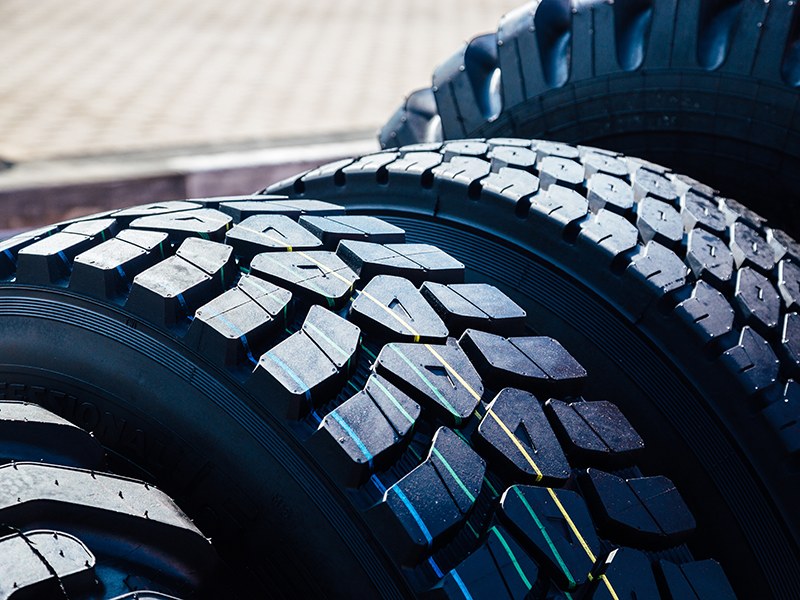New raw material and design technologies will enable tire makers to increase revenue, despite challenging market conditions, according to Smithers latest exclusive market forecasting. Data from its new report –
The Future of Global Tires to 2028 – reveal sales are continuing on a post-Covid recovery trajectory. The market will be worth a projected $262.2 billion in 2023, with a total of 2.47 billion tires sold worldwide.
Smithers expert forecasting shows that over the next five years value will increase at a compound annual growth rate (CAGR) of +5.2%, to reach $337.3 billion in 2028, at constant prices. Across the same period, volume sales will increase at a slower rate, +3.5% CAGR, to reach 2.94 billion units in 2028. This is indicative of shifting technical requirements in vehicle purchasing and design, within a febrile macroeconomic landscape.
Several factors are pushing for the adoption of higher-performance tires. High petroleum prices, tough new fuel efficiency requirements (Euro 7/NHTSA), and the transition to electrical vehicles are all placing a premium on lower rolling resistance tires. Realizing this, including on heavier SUV and electric powertrain models, while also optimizing handling and durability, is supporting a surge in sales of specialty and premium model tires. Across the PLT, two-wheeler, and TBR segments, premium tire sales will increase at +9.3% year-on-year for 2023-2028; well ahead of standard tires models (+2.3% CAGR).
This creates a major opportunity for investment in superior tire compounds and tread designs. In particular, many leading tire OEMs are deploying their latest enhancements to design products for EV fitments, as automakers worldwide push towards phasing out internal combustion engine (ICE) vehicles. Countering this are ongoing increases in tire raw materials. This is eroding profits, with high oil prices and shipping costs in the wake of the pandemic, exacerbated by the economic isolation of Russia’s oil and gas segment following the invasion of Ukraine.
In the short term, this is making Asian imports more cost-competitive, and stimulating investment in more energy-efficient tire manufacturing equipment in developed regions.
Smithers analysis also tracks evolution in tire raw material markets. Global consumption of these in 2023, will total 51.0 million metric tons, up from 42.8 million tons in 2020. Future forecast growth will closely follow tire unit volume sales, with a +3.6% CAGR forecast to push consumption to 60.9 million tons in 2028.
There are shifts within the selection of raw materials, as tire OEMs introduce higher-performance designs, and corporate strategies prioritize more sustainable material sets. This is seeing increased volumes of natural rubber (latex) in tires, along with lower rolling resistance silica fillers.
Recovered carbon black grades will also see wider use in tires moving forwards, providing a circular economy solution for end-of-life tires.
Across the forecast period the greatest increase in demand will be for polybutadiene (BR) and butyl rubber (IIR/PIB) grades. Simultaneously, Smithers forecasts a major downturn in demand for emulsion-SBR (E-SBR) grades, although solution-SBR (S-SBR) sales will remain healthy.
On a parallel track, tire makers will place extra emphasis on ethical sourcing, especially of natural rubber, with the new EU Deforestation Regulation posing a direct challenge for European OEMs. Emerging concerns over tire particulate emissions are expected to increase over the next five years – stimulating sales of harder wearing tire compounds, and the evolution of alternatives to 6PPD in manufacturing operations.
The Future of Global Tires to 2028 expertly identifies, analyzes, and quantifies all technology and market changes affecting the industry over the next five years. Its authoritative data set (~200 tables and figures) provides vital strategic insight. This segments the historic, current, and future tire market, by:
- Raw material type (tons) – Elastomers, NR, S-SBR, E-SBR, BR, IIR/PIB, IR; Fillers, Carbon black, Conventional silica, HD silica; Cords, Textile, Steel; Chemicals, Curing agents, Antidegradants, Processing aids, Silanes, Textile cord adhesives, Steel cord adhesives, Other; Processing oils, NAP, DAE, TDAE, RAE/TRAE, MES, Other
- Tire and vehicle type (value/units) – General/standard tires, Light vehicle, Truck & bus, Motorcycle; Specialty/premium tires, Light vehicle, Truck & bus, Motorcycle; Off-the-road (OTR) tires, Mining construction & ports, Agriculture, Industrial; Aviation tires
- Global region/leading national markets (value/units) – North America, USA, Canada, Mexico; South & Central America, Brazil, Other; Western Europe, France, Germany, Italy, UK, Other; Eastern Europe, Russia, Poland, Other; Middle East & Africa; Asia-Pacific, Australasia, China, India, Indonesia, Japan, Malaysia, Philippines, South Korea, Thailand, Vietnam, Other.
